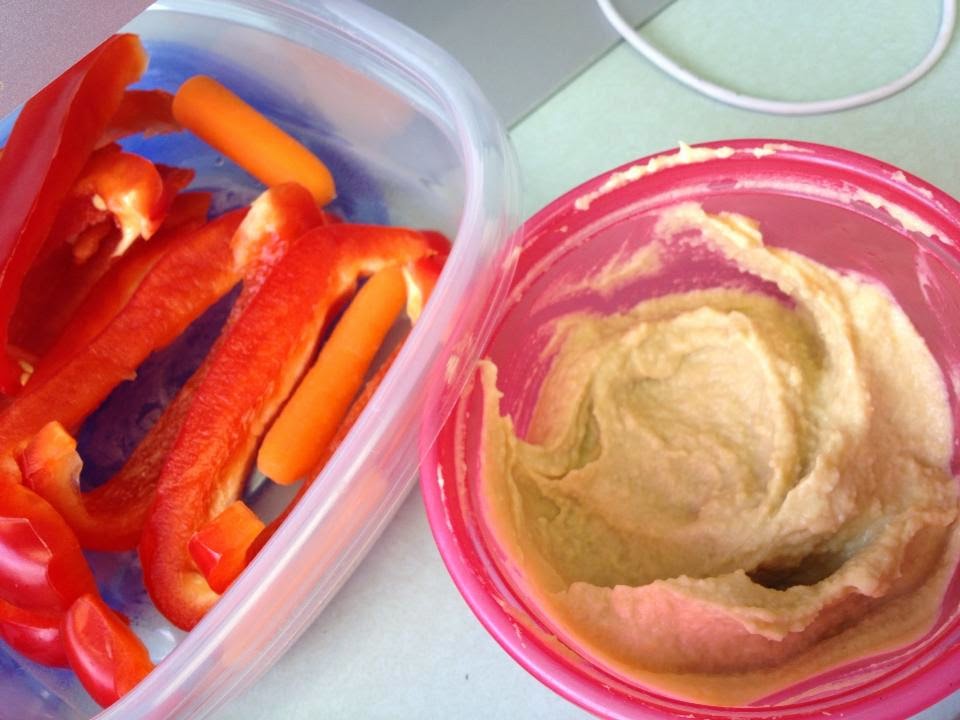One of our staple foods in our diet is hummus and over the years I've perfected my own hummus recipe. I usually make a double batch (as seen below), but I'll give you the recipe for a small batch. Always good to try a smaller yielding recipe to see how you like it and what tweaks you need to make -- all of our pallates are different, so what I like you won't necessarily like. And I take no offense for you to take my recipe and change it -- that's what I do afterall.
I'll be giving you recipes on this blog, but do keep in mind that I don't completely follow recipes, I think "Hmmm...I don't have that, so I'll use that" or "I don't like that ingredient, so I won't use it." Sometimes it's fine and sometimes it's not. I learn from every experiment.
In high school, I went to Russia for a month with eight other students from my high school (including some of my best friends, and some people who later became my best friends) and the assistant superintendent. On the way home, my friend Lisa was complaining about a recipe she got from her host family for a fermented fruit drink. It said throw this in and a dash of that. I laughed and said, "that's how I cook." She laughed and said something along the lines of "of course you do." Do you remember, Lisa?
That conversation continues to remind me that we all cook differently. And I've learned sometimes (such in baking) you can't go off recipe or things won't turn out quite right. But do note that I do still go off recipe and sometimes things are fine, and sometimes they are quite terrible. So terrible I have to throw it all out.
So about hummus...
I had never, ever heard of hummus until I went to college. Right away I got involved with the ECM (Ecumenical Christian Ministries that was run by a United Church of Christ minister--my dad is a UCC minister, so he had told me to look up Thad Holcombe, and the rest, as "people" say was history). One major weekly event sponsored by the ECM was Veggie Lunch. Growing up in rural Kansas, vegetarianism was not highly regarded. My best friend, Sarah Price, was vegetarian, but it wasn't understood. I barely understood it--until later. Until Veggie Lunch I didn't even know about veganism.
At that first Veggie Lunch food ran short--as it always did as more and more people showed up -- and Thad sent the cooks out for hummus. I don't remember if I tried it or not then. I was a bit scared by it. But I eventually tried it and over the years it grew on me. So I naturally started giving my daughter hummus as a baby--it was a pureed food after all...
As my tastes and diet have changed over the year, I have found myself wanting to make more and more of my own food from scratch so I can control what goes into my food, into my body. And hummus is quite easy.
The first time I made hummus, it was thick and didn't taste very good. I learned it was because I didn't use tahini, which is crucial.
Heather's Hummus Recipe:
1 can garbanzo or chick peas (if you soak and sprout your own beans, use two cups of soaked and/or cooked beans--I have tried making raw hummus and I did not like the taste of it. My friend, Stephanie Austin, who is vegan and a holistic healing practitioner, told me to soak the beans with a piece of seaweed--I haven't tried that yet)
1/4 cup tahini sauce (I use the white dip from Trader Joe's, be sure to read the label for any allergens or cross contamination)
Lemon juice (I juice my own lemon, I'd suggest 1/2 a lemon)
Extra Virgin Olive Oil (I use local, organic EVOO because the imported brands aren't necessarily 100% EVOO, but the California certified ones are. I have an olive oil from Trader Joe's in the photo, I tossed it in the photo because I was out of everything else)
Fresh garlic to taste (I like mine garlicky so I'll use 2-4 cloves)
Drain the can of garbanzo beans into a cup or bowl and set aside. Pour beans into food processor (or blender), tahini sauce and some liquids from beans. As the food processor is going, I drizzle in olive oil, lemon juice and liquid. I also toss in the garlic. I keep checking the consistency of the hummus, stopping to taste and scrape the sides of the processor. I like my hummus smooth and not to thick, so I run the food processor for at least five minutes, checking often, adding more liquid as needed.
Sometimes I had a dash of tumeric or a dash of cayenne. I love the roasted red pepper hummus found in the grocery store, but I haven't tried to make that yet. But I will. And I will share it here.
** Always check labels of every packaged food you buy to check for any hidden ingredients that you are allergic to or any cross contamination. The label will usually alert you to any cross contamination. For serious allergies, you can look up information on the company's web page or call the company.
If you are making this recipe for someone else with an allergy or sensitivity be sure to ask them about cross contamination, and any suggestions for brands to use if you are unsure. It's better to be safe than either show up with something your friend can't eat or something that makes them sick. **

























